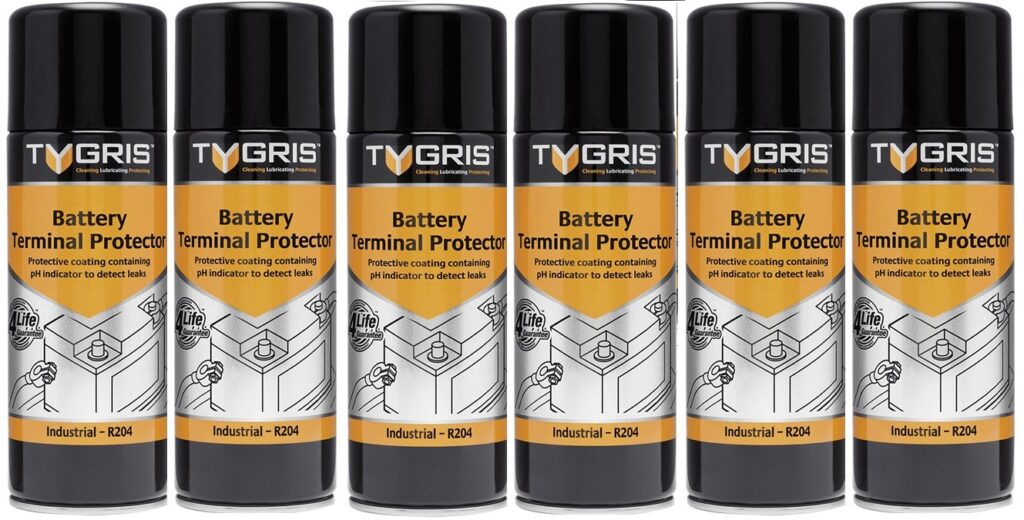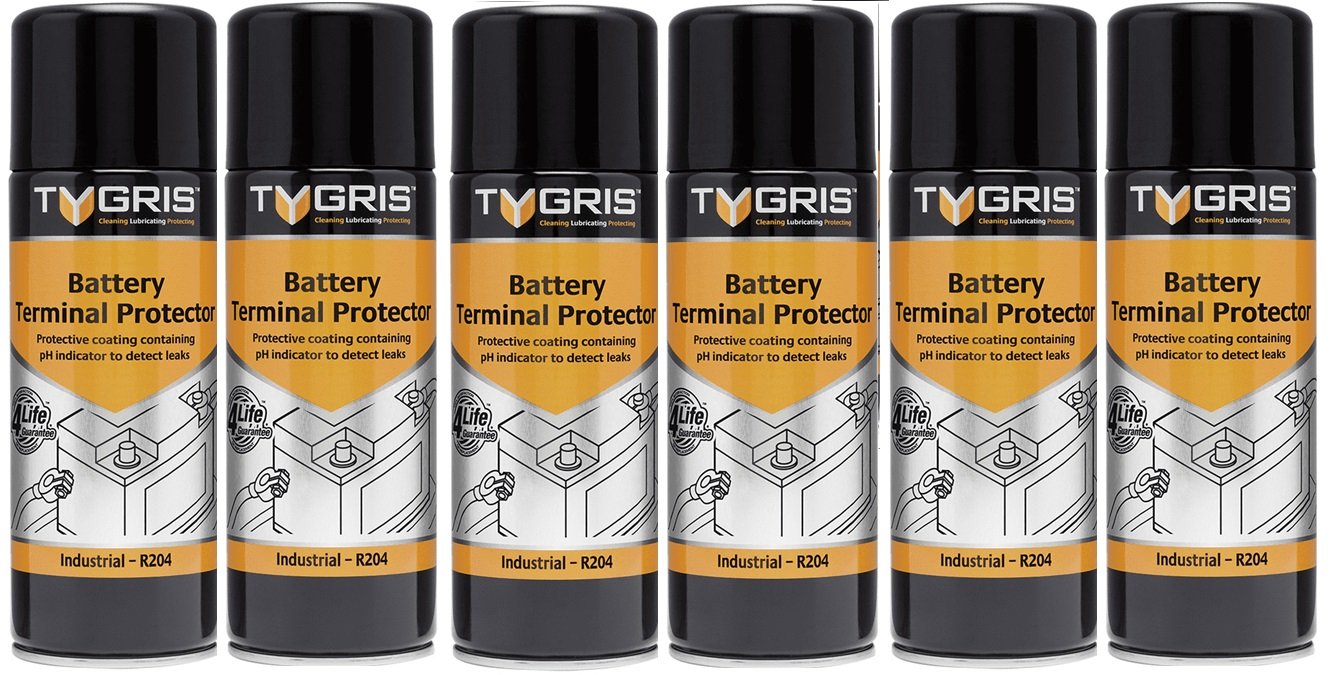
The Ultimate Guide to Terminal Protector Spray: Protecting Your Connections
In the intricate world of electrical systems, from your car’s battery to complex industrial machinery, connections are the lifeblood. Corrosion, that silent but relentless enemy, can wreak havoc on these connections, leading to performance degradation, system failures, and costly repairs. That’s where terminal protector spray steps in as a vital shield, safeguarding your electrical connections and ensuring optimal performance. But what exactly is terminal protector spray, and why is it so crucial for maintaining the integrity of your electrical systems?
This comprehensive guide delves into the world of terminal protector spray, exploring its benefits, applications, and how to choose the right product for your specific needs. We’ll uncover the science behind corrosion, the different types of terminal protector sprays available, and provide practical tips for application and maintenance. Whether you’re a seasoned mechanic, a DIY enthusiast, or simply looking to protect your car’s battery terminals, this guide will equip you with the knowledge to make informed decisions and keep your connections strong.
Understanding Corrosion: The Enemy of Electrical Connections
Corrosion is a natural process that occurs when a refined metal is converted to a more chemically stable form such as its oxide, hydroxide, or sulfide. This happens because the metal reacts with substances in its environment, such as oxygen, moisture, and pollutants. In the context of electrical connections, corrosion manifests as rust, oxidation, and other forms of degradation that can significantly impair the flow of electricity.
Several factors contribute to corrosion in electrical connections:
- Moisture: Water acts as an electrolyte, facilitating the electrochemical reactions that drive corrosion.
- Oxygen: Oxygen is a key component in many corrosion reactions, particularly oxidation.
- Salt: Salt, especially in coastal environments or road salt applications, accelerates corrosion due to its high conductivity.
- Acids and Pollutants: Exposure to acids, chemicals, and pollutants can exacerbate corrosion.
- Temperature Fluctuations: Temperature changes can cause condensation, increasing moisture exposure and accelerating corrosion.
The consequences of corrosion can be severe, leading to:
- Reduced Conductivity: Corrosion increases resistance, hindering the flow of electricity and reducing performance.
- Overheating: Increased resistance generates heat, potentially damaging components and creating a fire hazard.
- Intermittent Failures: Corrosion can cause connections to become unreliable, leading to intermittent failures and system malfunctions.
- Complete System Failure: In severe cases, corrosion can completely sever connections, resulting in system shutdown.
What is Terminal Protector Spray and How Does It Work?
Terminal protector spray is a specially formulated coating designed to prevent corrosion on electrical connections. It typically consists of a blend of oils, waxes, and corrosion inhibitors that create a protective barrier against moisture, oxygen, and other corrosive elements. The spray forms a thin, non-conductive film that seals the connection, preventing the ingress of corrosive substances and maintaining a clean, efficient electrical pathway.
The key mechanisms by which terminal protector spray works include:
- Barrier Protection: The spray creates a physical barrier that prevents moisture, oxygen, and other corrosive agents from reaching the metal surface.
- Corrosion Inhibition: Many terminal protector sprays contain corrosion inhibitors that chemically react with the metal surface to form a protective layer, preventing oxidation and other forms of corrosion.
- Lubrication: The spray provides lubrication, reducing friction and wear on the connection.
- Dielectric Properties: The non-conductive film prevents electrical leakage and short circuits.
Benefits of Using Terminal Protector Spray
Using terminal protector spray offers a multitude of benefits for both automotive and industrial applications:
- Extended Lifespan of Electrical Connections: By preventing corrosion, terminal protector spray significantly extends the lifespan of electrical connections, reducing the need for costly replacements.
- Improved Electrical Conductivity: By maintaining clean, corrosion-free connections, terminal protector spray ensures optimal electrical conductivity, improving system performance and efficiency.
- Reduced Maintenance Costs: Preventing corrosion reduces the frequency of maintenance and repairs, saving time and money.
- Enhanced Reliability: Terminal protector spray minimizes the risk of intermittent failures and system malfunctions, enhancing the reliability of electrical systems.
- Prevention of Costly Repairs: By addressing corrosion early, terminal protector spray prevents minor issues from escalating into major problems that require extensive and expensive repairs.
- Improved Safety: Corrosion can lead to overheating and electrical shorts, posing a safety hazard. Terminal protector spray mitigates these risks, improving overall safety.
Types of Terminal Protector Sprays
Several types of terminal protector sprays are available, each with its own unique properties and applications. Common types include:
- Petroleum-Based Sprays: These sprays are typically formulated with petroleum-based oils and waxes. They provide good corrosion protection and lubrication but may not be suitable for use on certain plastics or rubber components.
- Synthetic Sprays: Synthetic sprays are formulated with synthetic oils and additives. They offer superior corrosion protection, temperature resistance, and compatibility with a wider range of materials.
- Dielectric Sprays: These sprays are specifically formulated to provide high dielectric strength, preventing electrical leakage and short circuits. They are ideal for use on sensitive electronic components.
- Battery Terminal Protector Sprays: These sprays are specifically designed for use on battery terminals. They typically contain additives that neutralize battery acid and prevent corrosion caused by battery fumes.
- Ceramic-Based Sprays: These sprays contain ceramic particles that provide exceptional heat resistance and corrosion protection. They are often used in high-temperature applications.
Choosing the Right Terminal Protector Spray
Selecting the appropriate terminal protector spray is crucial for ensuring optimal performance and protection. Consider the following factors when making your selection:
- Application: Determine the specific application for which you need the spray. For example, battery terminals require a different type of spray than sensitive electronic components.
- Environmental Conditions: Consider the environmental conditions to which the connections will be exposed. If the connections will be exposed to moisture, salt, or harsh chemicals, choose a spray that offers superior corrosion protection.
- Material Compatibility: Ensure that the spray is compatible with the materials used in the electrical connections. Some sprays may damage certain plastics or rubber components.
- Temperature Range: Select a spray that can withstand the operating temperature range of the electrical system.
- Dielectric Strength: If you need to prevent electrical leakage, choose a spray with high dielectric strength.
- Ease of Application: Consider the ease of application. Some sprays are easier to apply than others.
- Drying Time: Check the drying time of the spray. Some sprays require a longer drying time than others.
- Reviews and Ratings: Read reviews and ratings from other users to get an idea of the spray’s performance and reliability.
How to Apply Terminal Protector Spray
Proper application of terminal protector spray is essential for achieving optimal results. Follow these steps for a successful application:
- Disconnect the Power: Disconnect the power supply to the electrical system before applying the spray.
- Clean the Connections: Clean the electrical connections thoroughly to remove any dirt, grease, corrosion, or other contaminants. Use a wire brush or sandpaper to remove stubborn corrosion.
- Dry the Connections: Ensure that the connections are completely dry before applying the spray.
- Apply the Spray: Shake the can of terminal protector spray well and apply a thin, even coat to the connections. Be sure to cover all exposed metal surfaces.
- Allow to Dry: Allow the spray to dry completely before reconnecting the power. Refer to the manufacturer’s instructions for the recommended drying time.
- Reassemble: Reassemble any components that were disassembled during the cleaning process.
Maintenance and Inspection
Regular maintenance and inspection are crucial for ensuring the long-term effectiveness of terminal protector spray. Inspect the connections periodically for signs of corrosion or damage. If necessary, clean the connections and reapply the spray. [See also: Battery Terminal Cleaning Guide] Consider reapplying the spray annually or more frequently in harsh environments. Documenting the application date can help track the spray’s effectiveness over time.
Safety Precautions
When using terminal protector spray, it’s important to follow these safety precautions:
- Read the Label: Read and understand the manufacturer’s instructions and safety precautions before using the spray.
- Work in a Well-Ventilated Area: Apply the spray in a well-ventilated area to avoid inhaling fumes.
- Wear Protective Gear: Wear gloves and eye protection to prevent skin and eye contact.
- Avoid Contact with Skin and Eyes: Avoid contact with skin and eyes. If contact occurs, flush immediately with water.
- Keep Away from Heat and Flame: Terminal protector spray is flammable. Keep away from heat, sparks, and open flame.
- Dispose of Properly: Dispose of empty cans and leftover spray properly according to local regulations.
Conclusion: Protecting Your Connections for Optimal Performance
Terminal protector spray is an indispensable tool for maintaining the integrity and performance of electrical systems. By preventing corrosion, it extends the lifespan of electrical connections, improves conductivity, reduces maintenance costs, and enhances reliability. Choosing the right spray and applying it correctly are crucial for achieving optimal results. By following the guidelines outlined in this comprehensive guide, you can protect your connections and ensure the long-term performance of your electrical systems. Don’t underestimate the power of terminal protector spray – it’s a small investment that can yield significant returns in terms of performance, reliability, and cost savings. Remember to always prioritize safety when working with electrical systems and chemical products like terminal protector spray. [See also: Choosing the Right Electrical Connector] Consider the environmental impact of your choice and opt for eco-friendly options when available. Properly applied terminal protector spray is a key element in ensuring the longevity and efficient operation of any electrical system, big or small.

